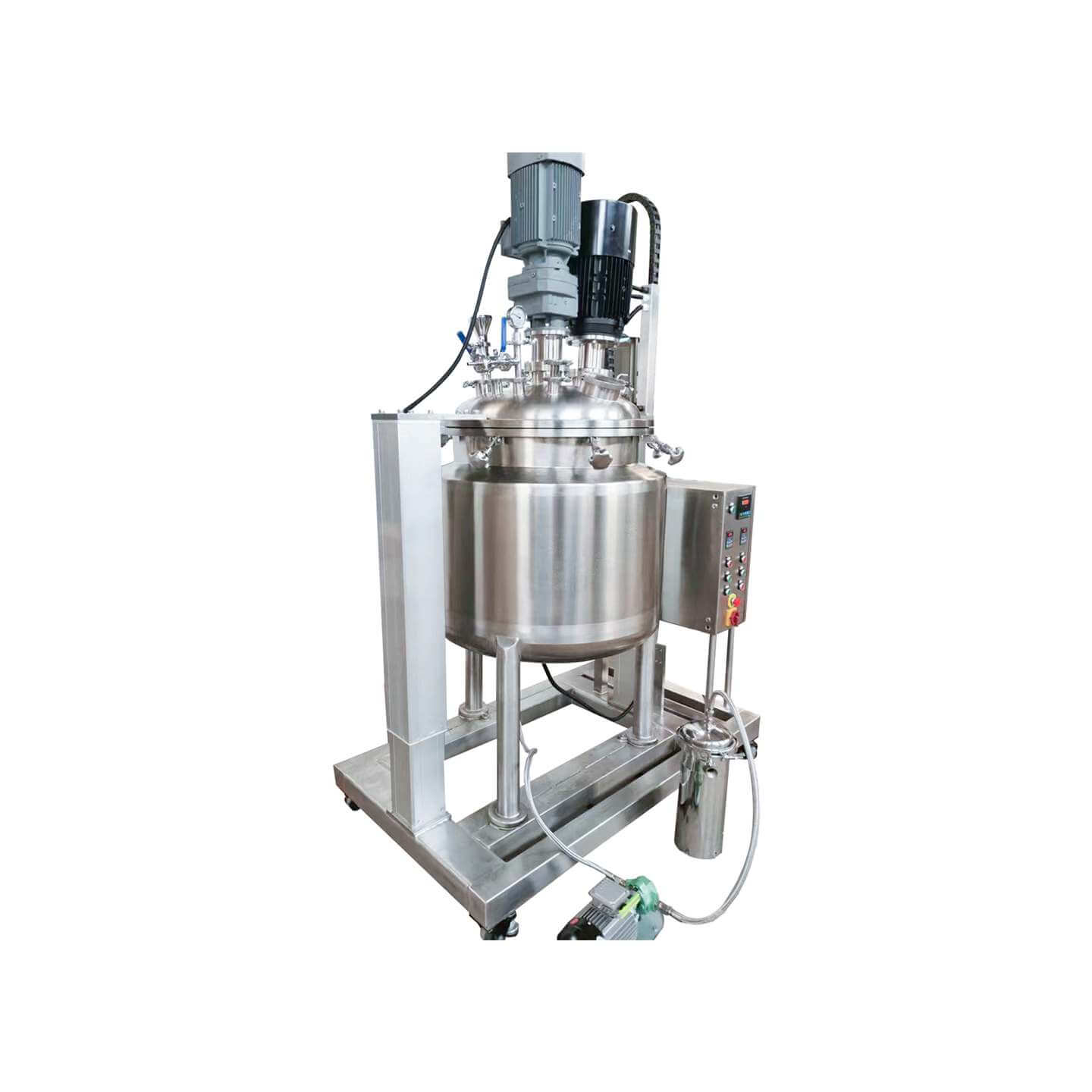

Laboratory Reactor
Laboratory reactor: used in the chemical industry, pesticide, paint, and other fields
Material
glass, stainless steel (316, 304), carbon steel, others
Capacity (L)
10-10000+
Mixing system
anchor, paddle, frame and others
Heating system
electric heating, oil heating and others
The laboratory reactor is small in size, beautiful in appearance, light, and fast in installation. It is composed of a pot body, pot cover, stirrer, jacket, support and transmission device, shaft sealing device, etc. The type of stirring device, rotation speed, sealing structure, heating method, etc. are produced.
Request a quoteThe laboratory reactor is mainly put into the inner layer of the reaction solvent for stirring the reaction, and the interlayer can be connected to different cold and heat sources (refrigerated liquid, hot water, or hot oil) for cyclic heating or cooling reaction, and the constant temperature is injected through the interlayer of the laboratory reactor. (high temperature or low temperature) hot melt medium or cooling medium to heat or cool the materials in the laboratory reactor at a constant temperature, and at the same time, the stirring reaction can be carried out under normal pressure or negative pressure according to the requirements of use. The material is reacted in the laboratory reactor and can control the evaporation and reflux of the reaction solution. After the reaction, the material can be discharged from the discharge port at the bottom of the kettle, and the operation is extremely convenient.

Laboratory reactor is indispensable and important equipment in the production process of the mechanical chemical industry, and their quality directly determines the quality of chemical products, such as laboratory reactors, jacketed reactors, hydrogenation reactors produced by RUNGYU, etc. Equipment, quality, and technological content are the best among similar products in my country.
With the further development of the industry, the demand for chemical reactor equipment in various countries will further increase, and the development trend is constantly changing, mainly reflected in:
1. The volume is increasing. The main purpose is to increase the output and reduce the cost, and at the same time, it can also reduce the quality error between batch production to a certain extent.
2. The agitator is developed from a single agitation to a double agitation, and an external pump makes the material circulate forcibly to improve the reaction speed.
3. With the development of artificial intelligence, laboratory reactors are also developing towards intelligence and automation. From the previous manual operation that could not be continuous production to the use of program control to continuously feed production, it not only ensures stable production but also reduces manpower. operational burden, while also avoiding possible contamination during production.
4. Energy saving is the development direction of all modern products. Laboratory reactors are also developing in the direction of improving production processes and reducing energy consumption. Some improved and innovative laboratory reactors have improved heat transfer efficiency and effectively reduced heat loss. With the advancement of science and technology, I believe that more efficient, energy-saving, and intelligent laboratory reactors will definitely appear in the chemical reactor market in the near future.
How to use the laboratory reactor and matters needing attention
1. When using the laboratory reactor, the refrigerant inlet valve must be closed, and the remaining refrigerant in the disease prevention pot and the jacket must be discharged, and then input the material.
2. Start the stirrer, then turn on the steam valve and the electric heating power supply. After reaching the required temperature, turn off the steam valve and the electric heating power supply, and then turn off the agitator after 2-3 minutes.
3. After the processing is completed, drain the remaining condensed water in the laboratory reactor and jacket, rinse it with warm water as soon as possible, brush off the sticky matter, then thoroughly clean the inner wall of the container with 40~500C alkaline water, and rinse with clean water.
4. When there is no material (heat-absorbing medium) in the laboratory reactor, the steam valve and electric heating power supply must not be opened. Pay special attention that the steam pressure must not exceed the rated working pressure.
5. Always pay attention to the working conditions of the entire equipment and reducer when maintaining the laboratory reactor. If the lubricating oil of the reducer is insufficient, it should be replenished immediately, and the electric heating medium oil should be replaced every six months.
6. The safety valves, pressure gauges, temperature gauges, distillation holes, electric heating rods, and electrical instruments on the jacket and pot cover should be checked regularly, and if there is any fault, they should be replaced or repaired immediately.
7. When the laboratory reactor is not in use, be sure to use warm water to thoroughly clean the inner and outer walls of the container, and scrub the pot frequently to keep the appearance clean and the inner tank bright to achieve the purpose of durability.




